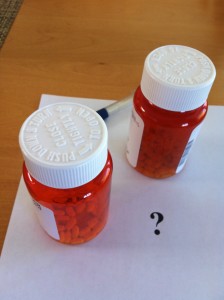Research described as “clinical” means that the research subjects are human beings. Clinical trials try to translate information learned in laboratories, or in experiments done with animals, to learn how it applies to people.
There are four types of clinical research:
- Observational studies follow people over time to learn more about a specific aspect of a disease.
- Management studies aim to learn more about a specific form of treatment, which helps doctors and patients “manage” the illness. A management study for ALS, for example, might look the effect of diet or exercise in mitigating symptoms.
- Device studies seek to learn if a device or machine is helpful to patients. For example, one device study looked at diaphragm pacing to determine if the Food and Drug Administration (FDA) could approve the device as safe and effective for ALS patients.
- Drug studies, or clinical trials, are what most people think of as clinical research. These studies test new drugs to determine if they are safe and effective in order to gain FDA approval.
There are four types of drug studies, called phases. If you consider joining a drug study, what you’ll learn depends on the phase you participate in.
Phase I studies are very early studies of a drug that may involve the first time a drug has been used in humans. Sometimes healthy people volunteer for these studies, but in ALS, Phase I studies often are done with people who have the illness. The main goal of Phase I studies is to learn if a drug causes serious harm. They are usually very small studies (about 30 people) done at a few centers.
Phase II studies look for further safety information and determine whether the drug has the potential to help people. They also try to determine the best dose to use for the drug. Phase II usually involve 100 to 200 people. They may involve two to four groups, each of which gets a different dose of the drug. One group may receive a placebo (an inactive pill that looks like the drug but doesn’t contain the drug).
Phase III studies, or pivotal studies, are much larger studies. If these studies show the drug to be safe and effective, the manufacturer will ask the FDA to approve the drug for sale. Phase III studies are always double-blind, placebo-controlled studies, which are considered the gold standard in clinical research to demonstrate clearly whether a drug is effective. Participants are assigned at random to take either the real drug or the placebo. However, neither the participant nor the researchers know whether the participant is taking the drug or the placebo. (Hence, the “double blind” nature of the study.) If the group that receives the drug benefits significantly more than the group that receives the placebo, the drug is considered effective. The FDA evaluates the study results and decides whether to approve the drug.
Phase IV studies are usually done after a drug is on the market to learn additional information about safety. These studies are rare in ALS clinical research.
In order to join a clinical trial, you must sign a written consent that describes all the potential risks and benefits. Stay tuned to learn more about your rights and responsibilities if you join a clinical research study.

